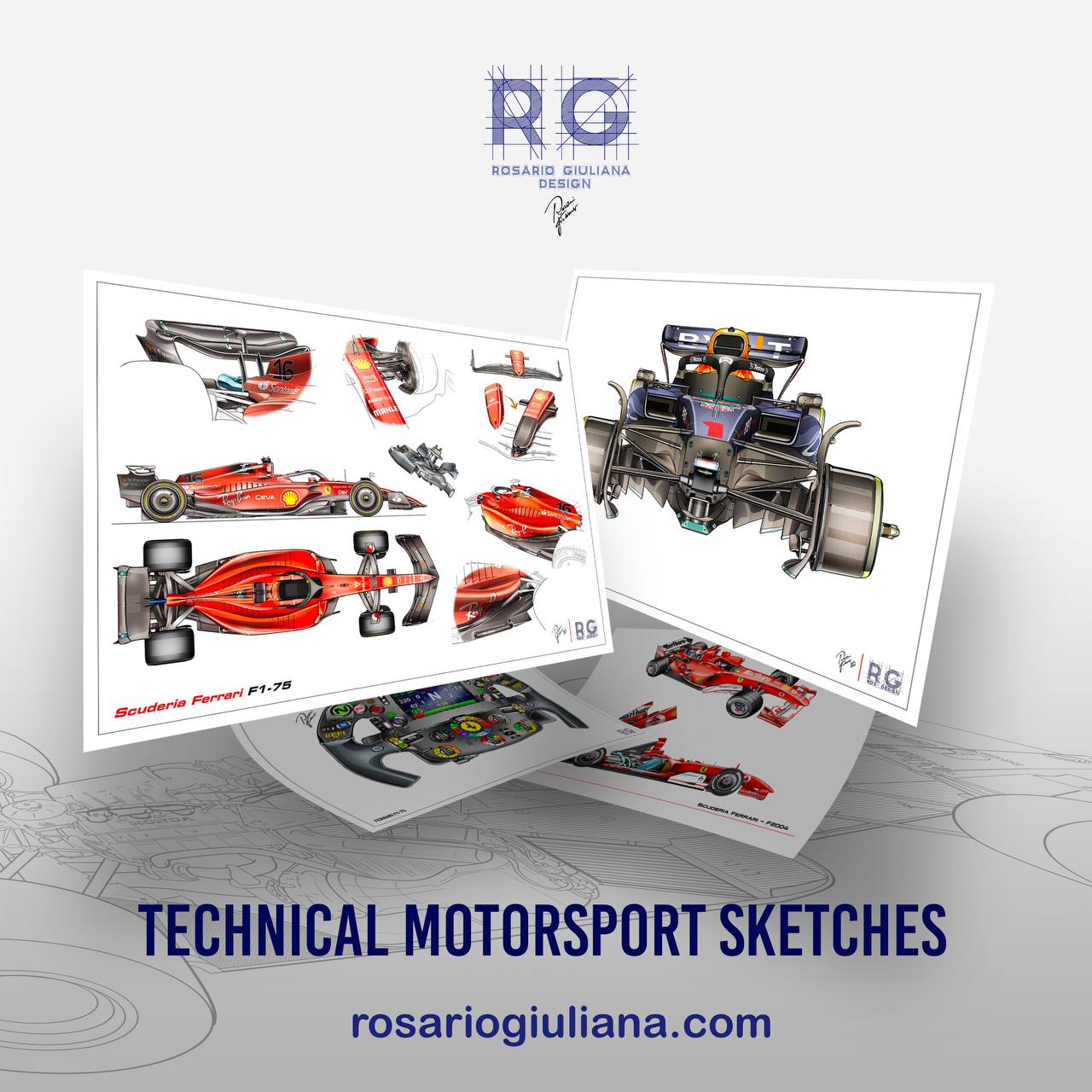The FIA today conducted a new and important test for the development of splash guards, those devices that should allow modern F1 cars to race even in extremely wet conditions. The issue relating to races in the rain has indeed remained topical after the major problems encountered in recent years. However, a resolution to it did not seem as immediate as it might have seemed to the Federation itself. For some time, the FIA has, in fact, been thinking and designing solutions which, however, have not yet gone beyond simple tests, with even “failure” results. For its part, Pirelli is continuing to develop wet tyres to improve grip, performance and water evacuation power. However, there are still many limitations that prevent current Formula 1 car from racing freely in the rain, in particular, the issue of visibility.
NEW WHEEL SPLASH GUARDS TO TRY TO WIDEN THE WALL OF WATER BEHIND THE SINGLE-SEATER
With Ferrari’s availability, the FIA wanted to bring new versions of splash guards onto the track today, even though they are all the result of a second macro-solution, very different from the first tested at Silverstone with Mercedes and clearly more cumbersome than the previous one. The Federation’s technicians, led by former Ferrari driver Nikolas Tombazis, have, in fact, developed a device that covers the tyre almost entirely, with a ‘dome’ that goes from the front to the rear of the tyre, with also a wider rear bulkhead.
This is aimed at ‘fending off’ splashes, leaving free only the rubber part with contact to the ground and some front windows beyond, but this is only in a different specification, also apart from part of the external section, as can be seen from the comparison photo in Bass. As unsightly as it may be, the solution must, first of all, respond to the need to reduce the rising of water into the air in the central part of the single-seater, which, when sprayed, penalizes the view of the following car, a significant problem at the Grand Prix.

The images arriving from Fiorano, with an artificially wet track, highlight some peculiarities. It is clear that the Federation’s objective is to try to limit the spray of water coming out of the tyres, also by moving the flow of water raised by the Full Wet tyres laterally, which dispose of over 300 litres of water per second, and therefore trying to ‘widen’ the wall behind the single-seater, without concentrating it only in the central area, where the driver of the following car sits. The F1-75 equipped with a splash guard, in fact, denotes a more lateral and less vertical water extraction. The result is a rear trail that is much less dense and shorter in length, especially in the completely closed version of the splash guard.

THE FIA IS TRYING TO HALVE THE FLOW OF WATER REACHING THE DRIVERS’ VISORS
To check whether visibility had really improved, the F1-75 equipped with splash guards took to the track at the same time as the SF-24 (without the new device). In this regard, ad hoc tests were carried out, with the following car positioned at different distances in the various runs, this for a more complete and necessary data collection for the FIA to understand if the new project is going in the right direction, managing approximately halve the spray arriving at the next pilot , or if necessary take another one.

It is clear that the biggest problem remains that of the water raised by the diffuser, a fundamental component of these cars and still very powerful. However, the FIA has not yet wanted to find a solution, given that it cannot be closed under penalty of an aerodynamic block, which would make driving these new generation cars very dangerous.
“We still have doubts about what the actual proportion is between the spray due to the tyres and that generated by the diffuser,” explained Tombazis.
“We know that both factors are quite significant, and we are clearly aware that the problem cannot be solved completely.”
Today’s objective was precisely to try to limit the spray caused by the tyres; also thinking about 2026, when the problem generated by the diffuser will tend to reduce, thanks to its lesser influence on those cars. However, it is understood that the one brought to the track today is not the definitive version of the Wet Weather Package, but one of the necessary steps to verify the correlation between design and track, the FIA said.
Gallery with exclusive photos Formu1a.uno











